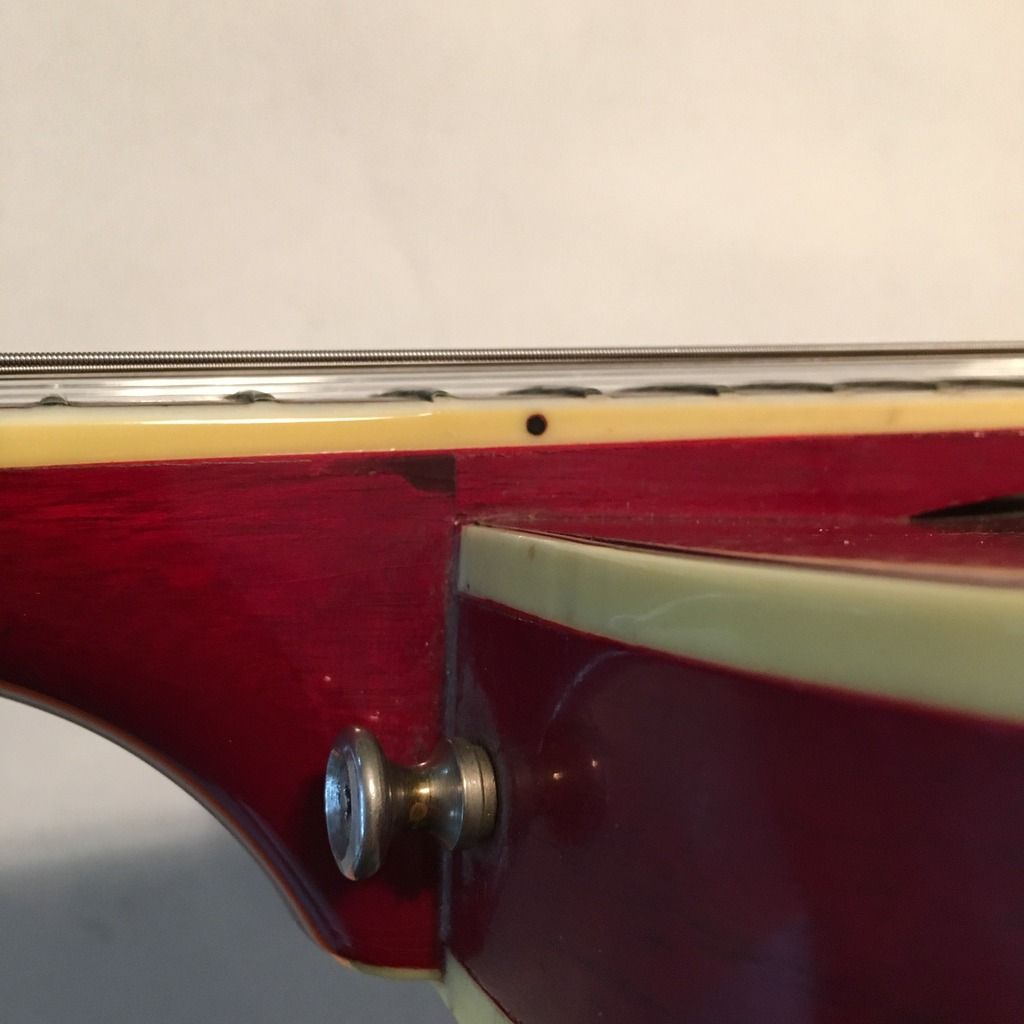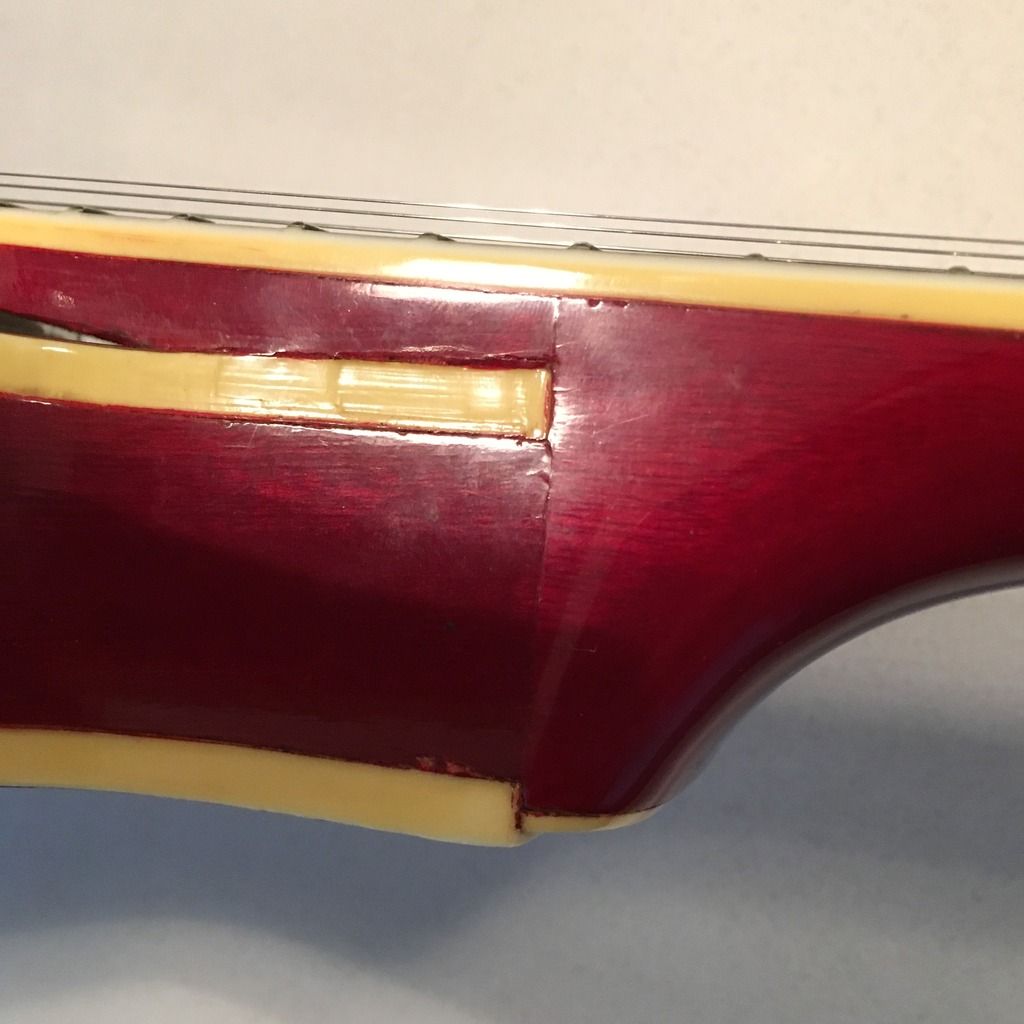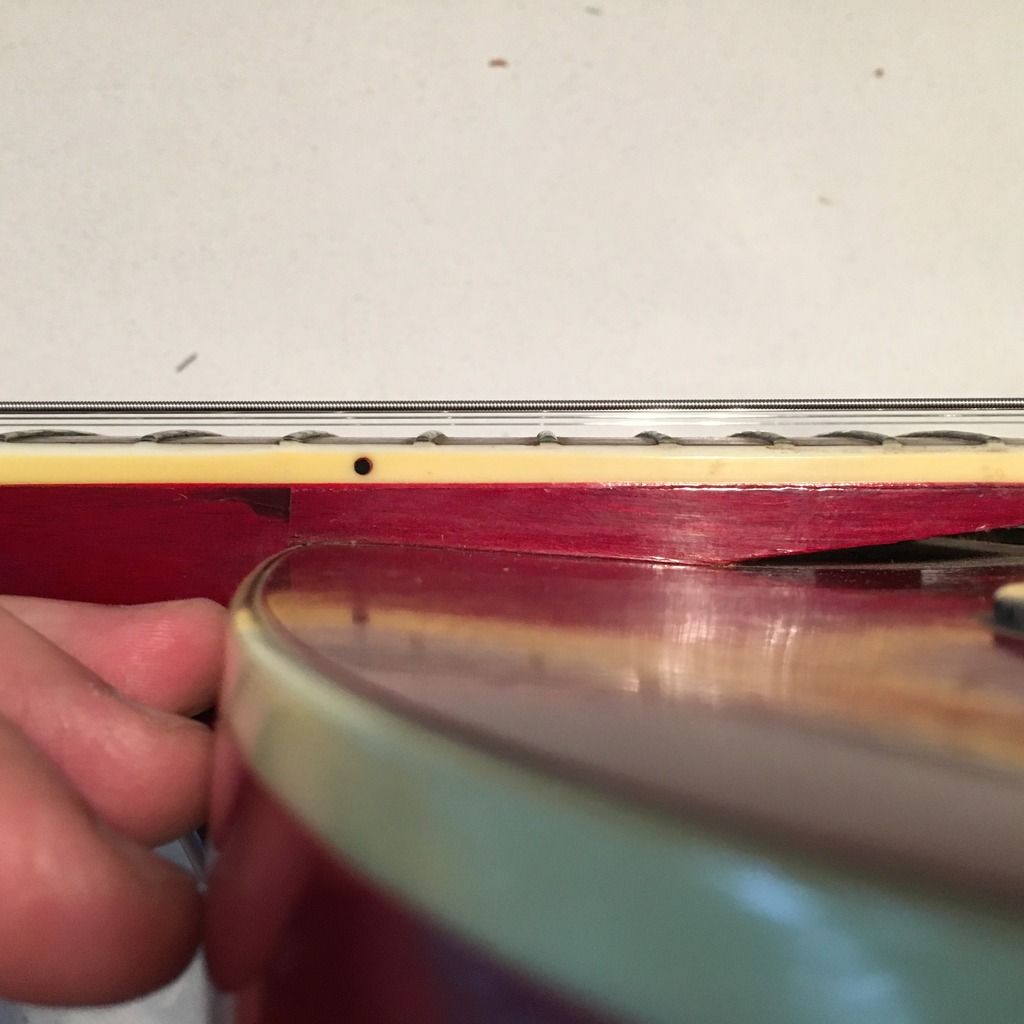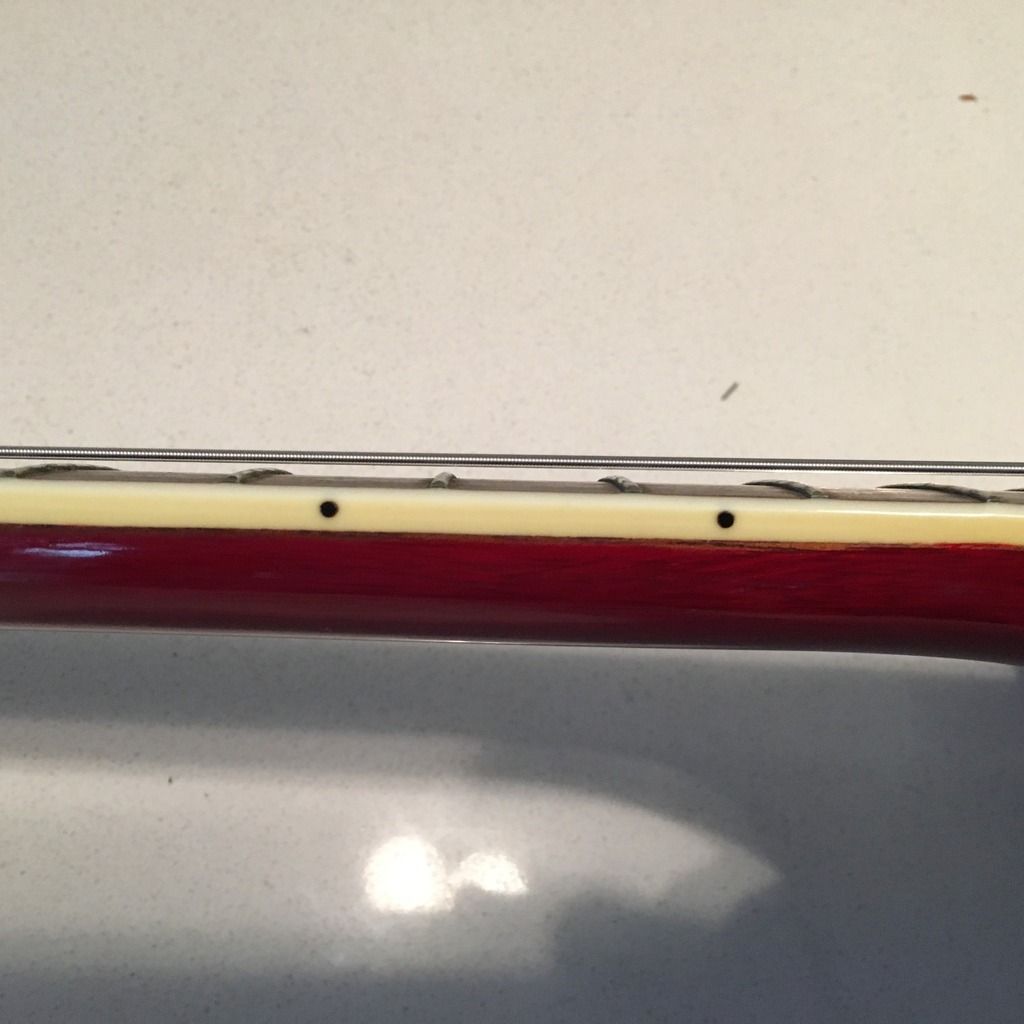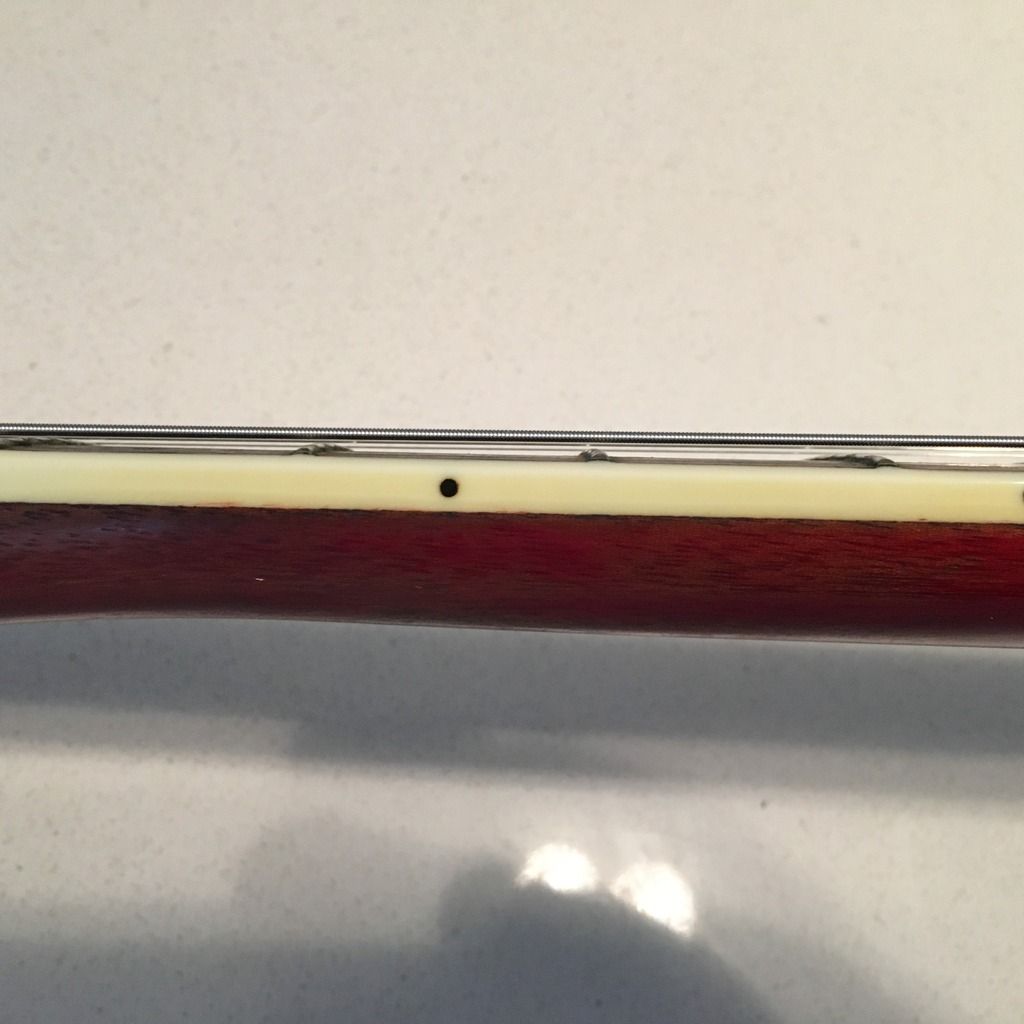Hi everyone!
I'm basically a new member here, although I've lurked for some time.
I've always wanted a Starfire since I played my grandfather's as a kid, and I finally got my hands on one. I originally wanted an early '60s SFIII with Dynasonics, but came across a '66 with the mini-HBs and I'm really happy with it. The pickups much brighter than I expected and have a nice jangly tone, somewhere between a Gretsch and a Gibson, I suppose. It's in great shape for its age, showing some honest wear as any loved instrument should. The binding has yellowed nicely and has no shrinkage, save on spot on the back.
The action was a little high and the bridge was bottomed out, which concerned me a bit. A few turns of the truss rod flattened the fretboard nicely and the action came down to a very comfortable height, but it starts getting higher after the 12th fret. It isn't terrible; definitely playable for the time being, but I suspect it may need a neck reset (and possible refret) in the near future. There is no visible evidence of the neck joint being a problem, but something isn't right. I thought about grinding down the bottom of the bridge to get it lower, but the break angle from the Guildsby is already not exactly ideal. I suppose I could try using lighter gauge strings and see if it doesn't pull on the neck so much?
The tuners are okay, not great, but okay. I can live with them.
All in all I'm really excited about the guitar and plan to keep it for a very, very long time. Hopefully these issues are relatively easy to fix and I can relax and simply enjoy it. Any words of advice you guys might have would be really appreciated.
Cheers!


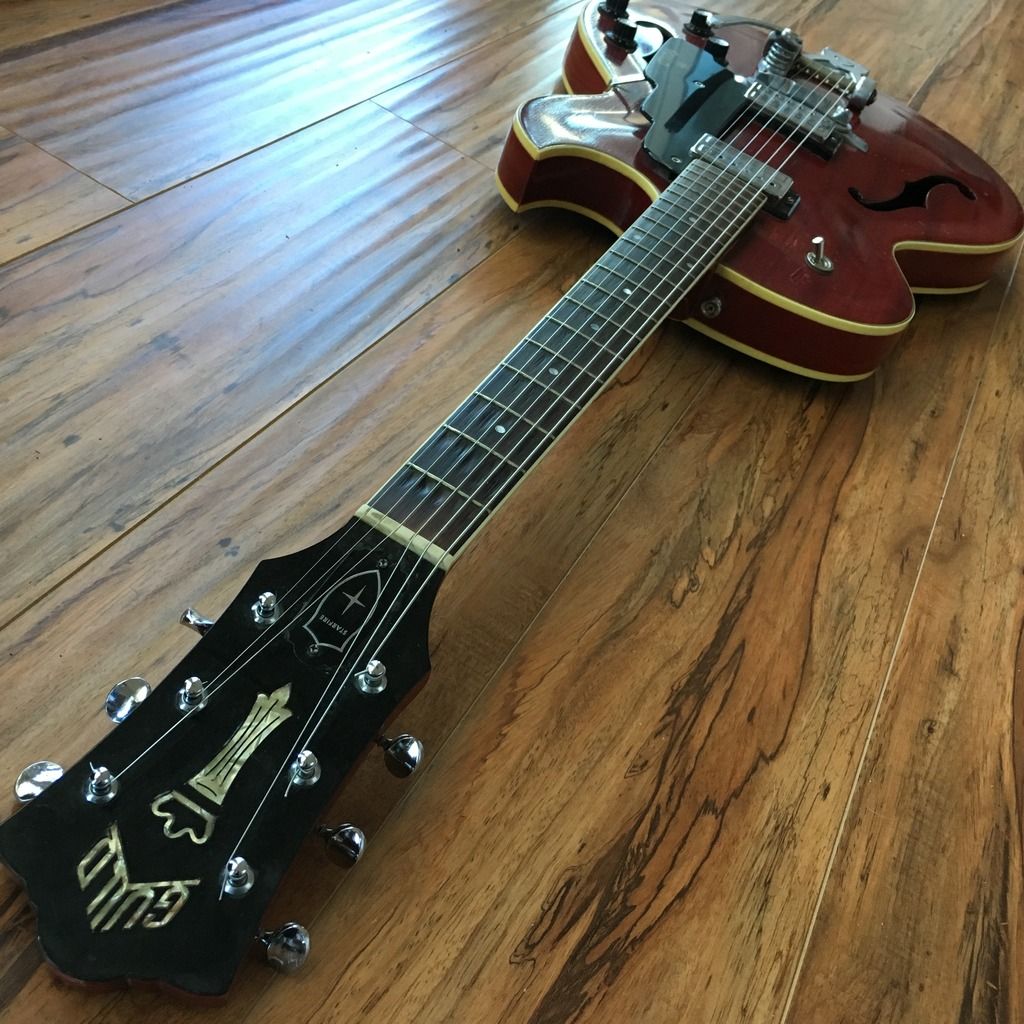

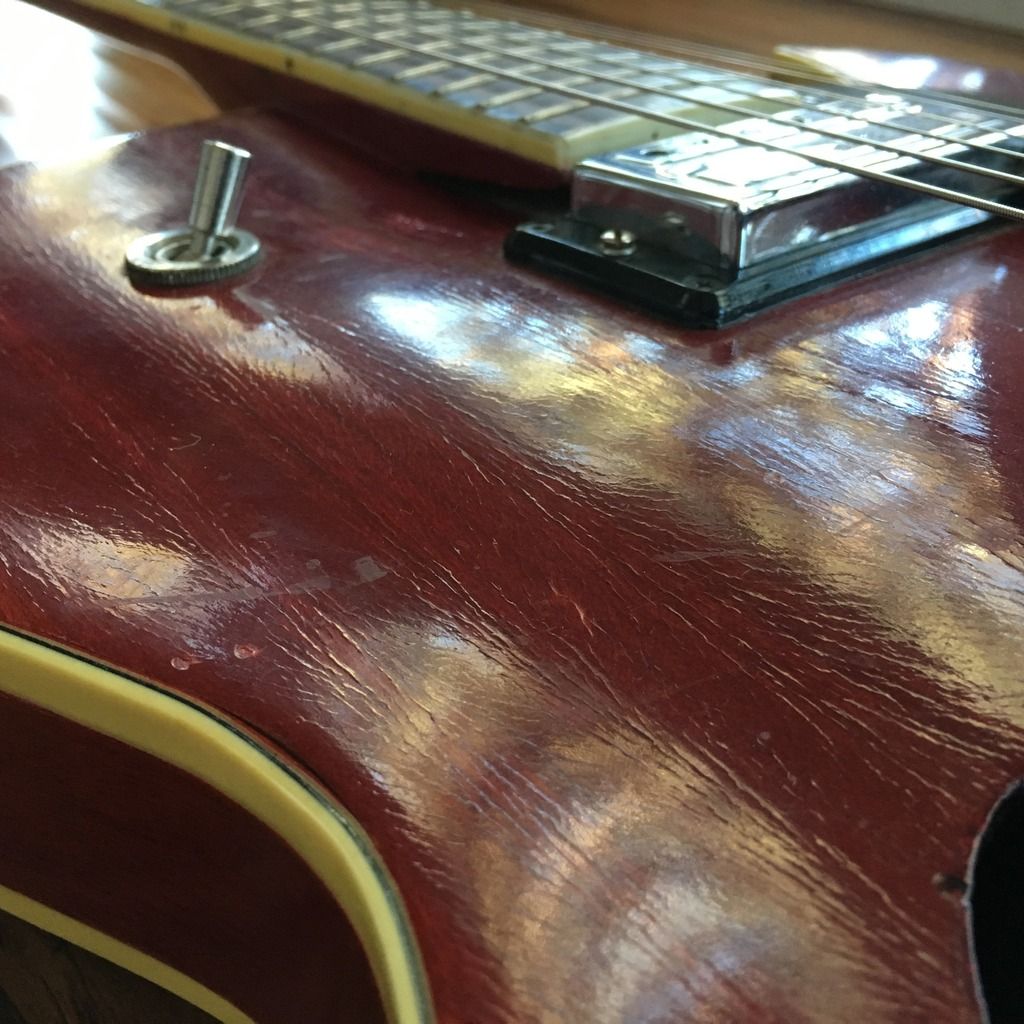
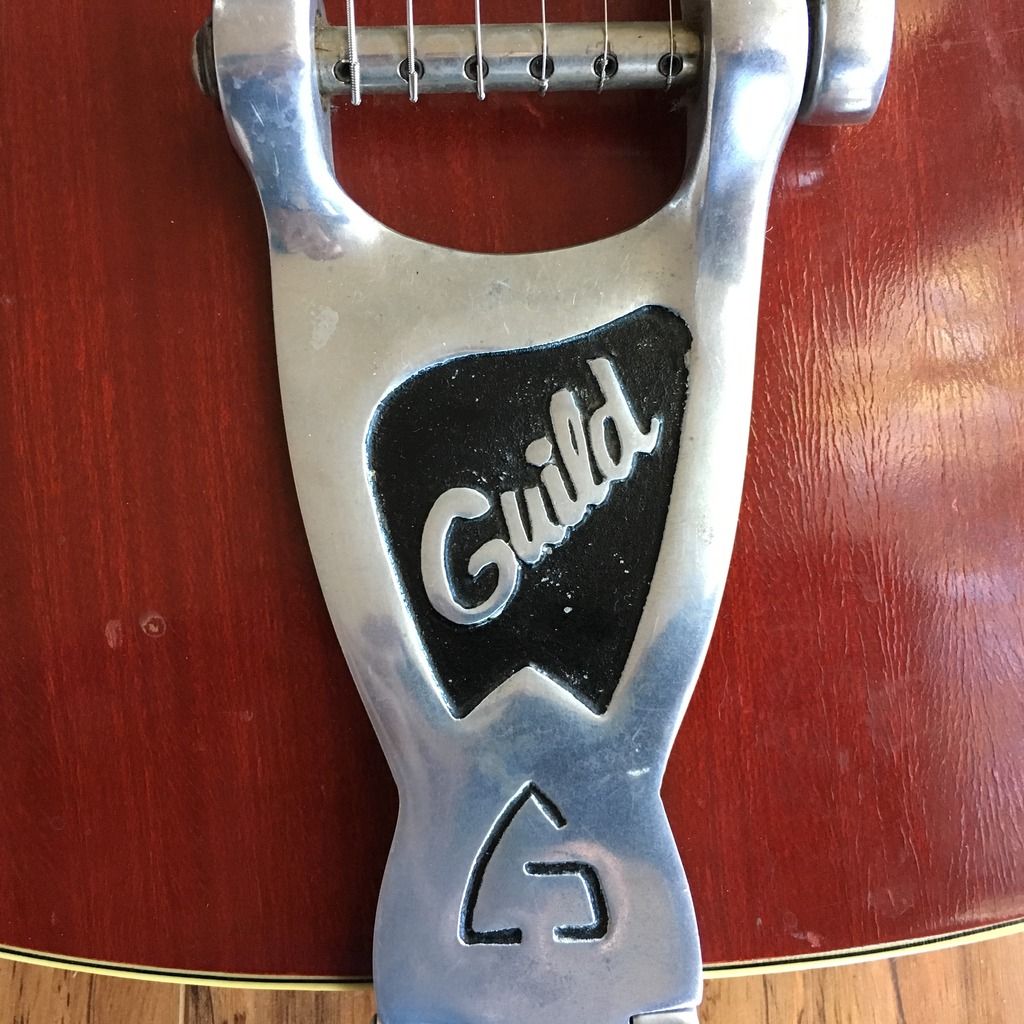

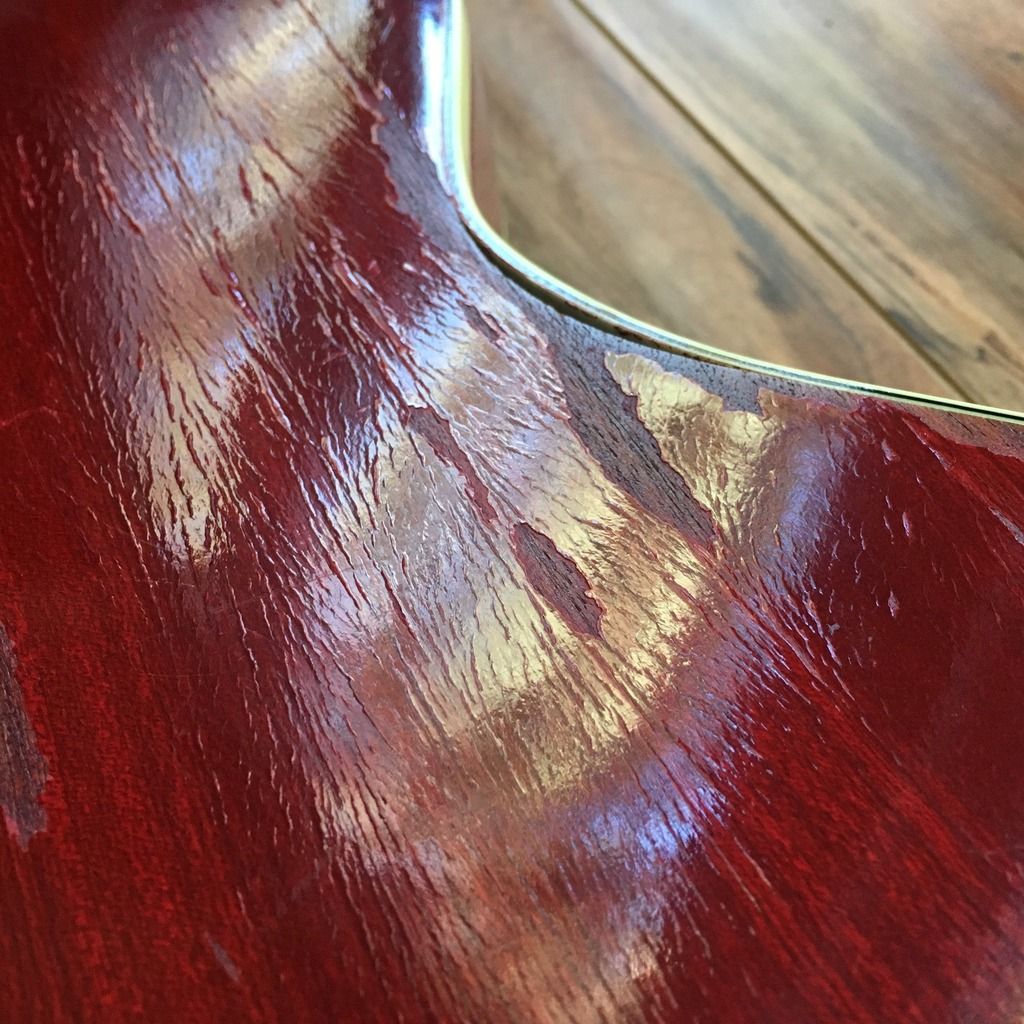
I'm basically a new member here, although I've lurked for some time.
I've always wanted a Starfire since I played my grandfather's as a kid, and I finally got my hands on one. I originally wanted an early '60s SFIII with Dynasonics, but came across a '66 with the mini-HBs and I'm really happy with it. The pickups much brighter than I expected and have a nice jangly tone, somewhere between a Gretsch and a Gibson, I suppose. It's in great shape for its age, showing some honest wear as any loved instrument should. The binding has yellowed nicely and has no shrinkage, save on spot on the back.
The action was a little high and the bridge was bottomed out, which concerned me a bit. A few turns of the truss rod flattened the fretboard nicely and the action came down to a very comfortable height, but it starts getting higher after the 12th fret. It isn't terrible; definitely playable for the time being, but I suspect it may need a neck reset (and possible refret) in the near future. There is no visible evidence of the neck joint being a problem, but something isn't right. I thought about grinding down the bottom of the bridge to get it lower, but the break angle from the Guildsby is already not exactly ideal. I suppose I could try using lighter gauge strings and see if it doesn't pull on the neck so much?
The tuners are okay, not great, but okay. I can live with them.
All in all I'm really excited about the guitar and plan to keep it for a very, very long time. Hopefully these issues are relatively easy to fix and I can relax and simply enjoy it. Any words of advice you guys might have would be really appreciated.
Cheers!








Last edited:
